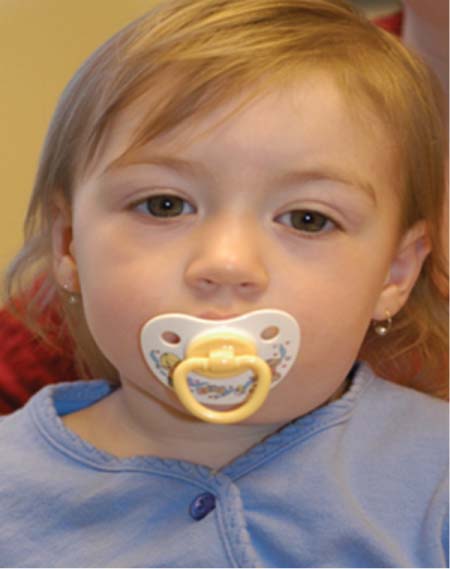68 Masses of the Face and Neck in Children There are a variety of head and neck presentations of a mass that may or may not be associated with surface findings such as a rash or lesion. These can best be grouped first based upon location, then based on characteristics on palpation. It is important to remember that at any site there can be presentation of a solid organ tumor involving the nerves, muscles, vascular, or connective tissue; lymphoma within or outside lymphoid tissue; and leukemic infiltrate, which may appear to be a solid organ mass but represents tissue infiltration by a circulating blood-cell neoplasm. Submental adenopathy (level I): Usually resulting from oral cavity soft tissue or periodontal infection, represents the most likely etiology of a submental neck mass. Ranula, plunging ranula, or traumatic lymphocele (Fig. 68.1) may also present in the submental region. These are likely to be unilateral, but they can extend across the floor of the mouth to present bilaterally. Ranula and plunging ranula are likely to have an oral component (submucosal blue, soft mass), assisting in their diagnosis. The traumatic lymphocele follows a history of regional trauma, is often painless itself, and may have no intraoral component. Fig. 68.1 Traumatic lymphocele in the left submandibular region. (Courtesy of Dr. Daniel J. Kirse.) A thyroglossal duct cyst (TDC) is another midline subcutaneous mass that can also present with a tiny skin pit. It may swell and become noticeable only after it becomes infected (usually associated with an upper respiratory infection). TDCs move with swallowing and are often near the hyoid bone, through which the cyst tracks developmentally. However, TDC can present as high as the submental space or as low as the thyroid gland isthmus. The clinician should investigate to ensure that the TDC is not the only functioning thyroid tissue in the patient. Teratoma is likely to present in the midline, and often in the oral cavity/pharynx; it represents a tumor containing all three germinal cell lines. These are sometimes diagnosed prenatally on ultrasonography and can lead to congenital high-airway obstruction syndrome (CHAOS). Even if asymptomatic, teratomas should be excised to avoid potential degeneration to malignancy. Thyroid nodule is much less common in children than in adults, but masses, when present, are more likely to be malignant in children than in adults. Auto-immune or infectious thyroiditis may present with a tender inflammatory mass in the anterior neck, even in children. Finally, an abnormally large thymus may present at the suprasternal notch. The lateral neck contains multiple lymph node groups (level IIa, IIb, III, IV, and V). Enlarged lymph nodes may present as isolated masses or in matted collections of nodes. They may be firm or fluctuant. In children, enlarged lymph nodes are much more likely to represent infection rather than metastatic malignancy. Lymphatic malformations (Fig. 68.2) frequently present in the lateral neck and face. These are often multicystic and refractory to simple excision. They can be transilluminated with a light, using caution not to burn the delicate overlying skin with the light source. The macrocystic malformations are usually quite easily collapsed on palpation, and the overlying skin may appear very redundant once the cysts are collapsed. Microcystic malformations may be firmer. The unusual lateral neck teratoma may masquerade as a multicystic lymphatic malformation.
 Anterior Neck
Anterior Neck
 Lateral Neck
Lateral Neck
Stay updated, free articles. Join our Telegram channel

Full access? Get Clinical Tree



